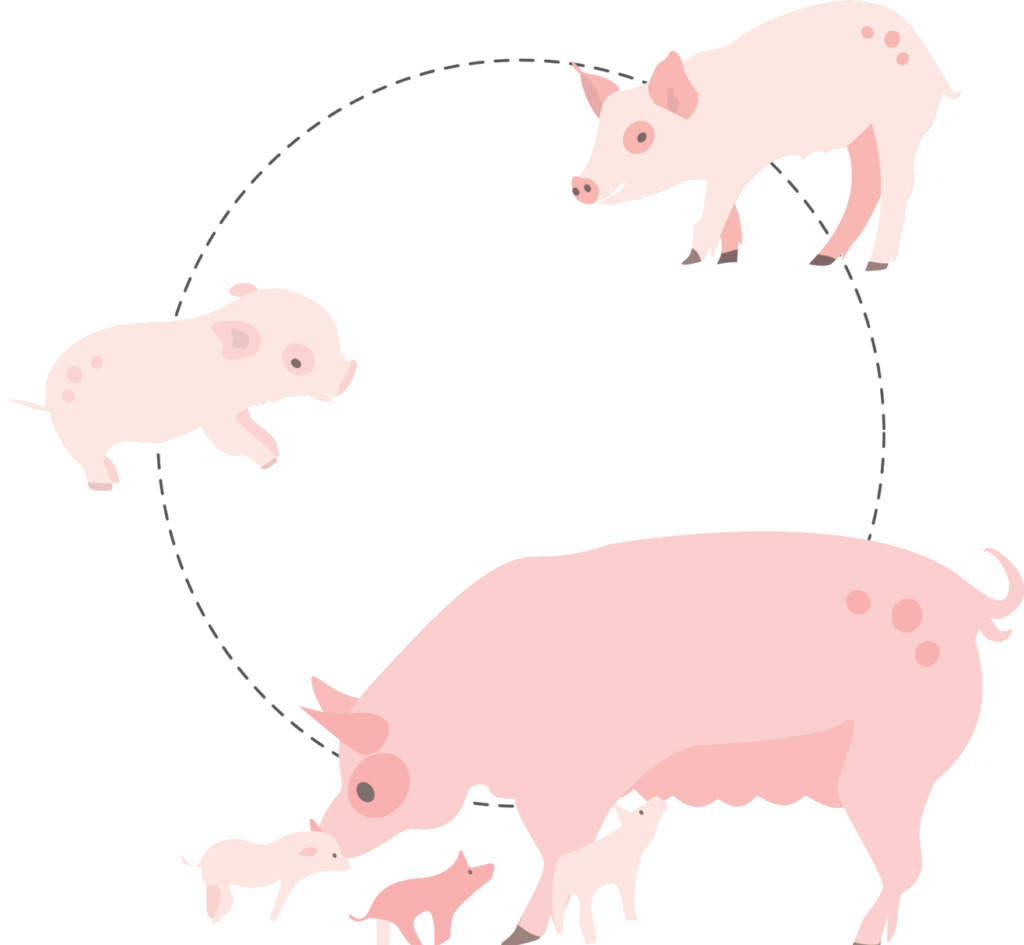will be able to estimate how much suffering is associated with different welfare challenges and production systems and identify key research gaps in their subject areas.
can compare, quantitatively, the welfare impact of interventions, laws and standards to reduce animal suffering.
will be able to describe, estimate and compare the pain from different diseases and injuries with a friendly notation method and universal metric, hence treat pain more effectively.
will be able to quantify the welfare costs of different nutritional, genetic and management practices, and determine the cost-effectiveness of welfare improvements for the industry.
can establish objective thresholds on how much loss of animal welfare is acceptable for animal-sourced products associated with different industry practices and production systems.
can estimate the animal welfare costs of different environmental policies, hence establish standards and legislation that do not unintentionally harm animals as a consequence.

Which is associated with more suffering: a pound of meat from intensively raised fast-growing chickens or from farmed tilapia? The acute pain from a fracture or a prolonged state of hunger? And how much suffering can be averted with cage-free campaigns? Or by setting (genetic) limits to growth rates of farmed animals? By using different stunning and slaughter practices? By reducing stocking density? Or by improving water quality parameters for aquatic species?
To effectively improve the lives of animals, a clear understanding of the impact of different living conditions and risk factors on welfare is essential. In this workshop we teach participants how to answer these and similar questions using the Cumulative Pain Framework (CPF), an analytical method increasingly used to inform decisions about animal welfare by advocates, funders, and analysts from different areas.
Briefly, the CPF quantifies the cumulative load of negative experiences endured over any period of time using a meaningful metric: time in pain (pain is a shorthand for ‘any negative affective state’) of four intensities (Annoying, Hurtful, Disabling and Excruciating). The method is transparent, brings important knowledge gaps into light and incorporates uncertainty about all parameters into the estimates. By using a universal metric at the heart of how sentient organisms experience life (time), the method enables comparing and combining the impact of experiences of very different nature. A brief description is available in the video below.

The workshop is structured in two modules: (1) Theoretical: a step-by-step guidance to calculating the Cumulative time in pain associated with one or more welfare challenges and production contexts and (2) Practical: hands-on experience assisted by the teaching team. Participants will have a choice either (1) to work collaboratively (in groups) on a decision-relevant research question provided by the Welfare Footprint Project team or (2) to apply the method to their own data and work.
The workshop duration can be adapted according to the audience needs and venue, lasting anything from 2 to 8 hours, with the possibility of continued collaboration depending on the organization’s interests.
Subjective Confidence Intervals
Exercises
The assessment of the time spent in pain (physical or psychological) of different intensities as a result of one or more harms of interest (e.g., diseases, deprivations). The use of a universal metric with biological meaning (time in pain) enables comparing and combining the cumulative load of negative experiences emerging from different industry practices and provides the basis for the development of welfare footprints of animal-sourced products..
For measurement purposes, the term pain is used as a shorthand for any ‘negative (unpleasant) affective state’. States with a somatic origin are referred to as ‘physical pain’ (e.g. aches, hunger, injuries, thermal stress), while those related to the primary emotional systems are referred to as ‘psychological pain’ (e.g. fear, frustration, boredom).
Research and decisions aimed at improving the quality of life of animals are already guided by assumptions about their affective states and how they are modulated. For example, requirements for standards such as minimum space allowance, enrichment, outdoor access and stunning prior to slaughter (inputs) necessarily assume that these practices lead to improved well-being (i.e., reduce the intensity, frequency and/or duration of negative affective experiences). Many assessments also rely on indirect indicators of affective states, such as behavior and neurophysiology (outputs). Ultimately, any form of welfare assessment or attempt to improve animal welfare is inherently based on an assumed knowledge of what positively or negatively affects their inner experiences. The current framework is focused on inferring, using existing scientific evidence, parameters (time and intensity) natural to affective experiences. By atomizing the analysis into the effect of each welfare challenge on individuals, it ensures that the evidence and assumptions supporting the proposed parameter values are made explicit, helping drive targeted progress. Refocusing the welfare debate towards the study of affective experiences at the individual level (where experience occurs) also makes the assessment of animal welfare more tractable.
(1) Use of a universal (comparable) metric of welfare with real-word meaning; (2) Use of a time-based measure of welfare (as experiences unfold over time); (3) Assessment of cumulative load of negative experiences over period of interest; (4) Transparency in each analytical stage and provision of uncertainty associated with estimates; (5) Use of multiple lines of evidence to reduce uncertainty around estimates; (6) Continuous empirical updating of estimates.
The framework can be applied to any sentient species, including humans. Because the metric used is based on a phenomenon relevant to all sentient beings (time in pain of different intensities), it can be applied to virtually any sentient species to assess any context of relevance.
A flowchart with the main analytical steps is provided in our methods page and in this interactive board.

SCIENTIFIC DIRECTOR

EXECUTIVE DIRECTOR
